A variety of factors influence consumers’ purchasing decisions. Ratings and customer reviews are the primary factors that influence customer purchasing decisions. Before making a purchase, 95% of customers read product reviews.1
Businesses, on the other hand, struggle to collect a large number of customer reviews from various websites. Social media scraping enables businesses to monitor and collect customer reviews from social media networks and websites.
In this article, we highlight what review scraping is, how businesses can collect and monitor customer and product review data from different websites, and why collecting and monitoring customer reviews is essential for businesses.
What is review scraping?
Review scraping is the process of extracting customer review data from multiple web sources using web scraping tools or web scraping apis such as social media platforms and review pages like Amazon, eBay, G2, Capterra, etc.
How to scrape product/customer reviews from e-commerce websites
Assume you produce gaming accessories for consumers, such as gaming headset, mouse, etc. You need to know the main competitors in the industry, which trends you need to go ahead of, see where you are in this competition, and identify your strengths and weaknesses to determine a roadmap that brings a competitive edge.
Web scraping bots collect competitor reviews from e-commerce websites. You can also scrape the customer questions and answers section to discover more about how your competitors distinguish their products as well as the preferences and needs of your target market.
7 Steps to scrape product/customer reviews from e-commerce sites
To illustrate steps let us take gaming headsets as a target product.
- When you search for gaming headsets, you will receive numerous product results. The results can be sorted according to your preferences, but generally, highly-rated (number of ratings and customer reviews) products are listed near the top (see Figure 1).
Figure 1: Search results for “gaming headsets”
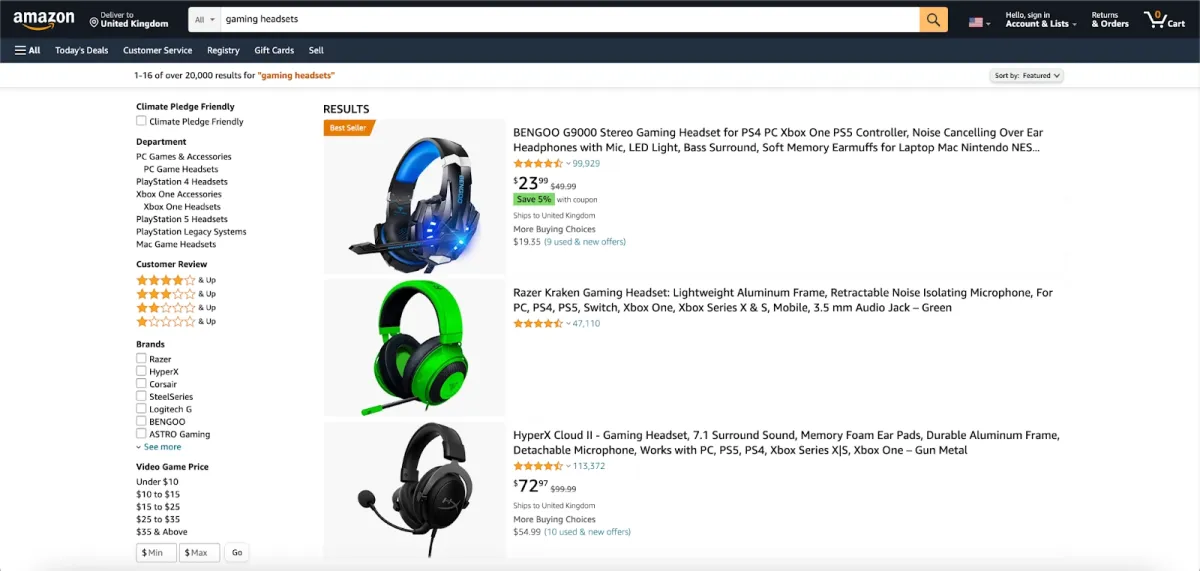
- Click see all customer reviews to spot all customer reviews for a specific brand (see Figure 2). Scroll down the product page to receive all of the customer review data.
Figure 2: Customer reviews for a specific brand
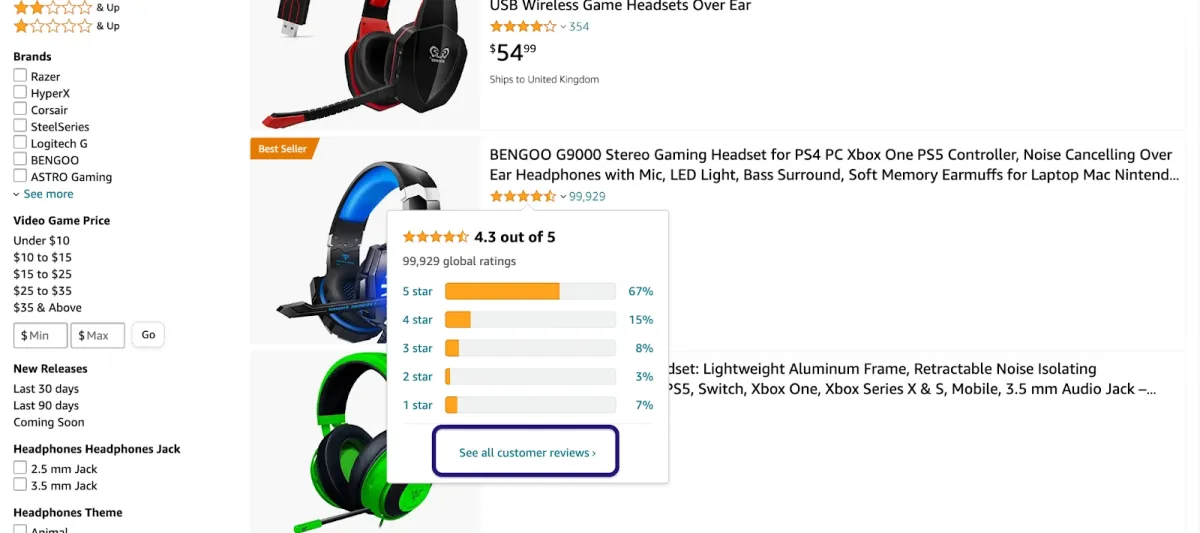
- This product has 99,929 total ratings and 24,332 reviews. As a result, you will not be able to see all of the reviews on a single page. The first page of customer reviews contains 10 out of 24,332 total reviews (see Figure 3).
Figure 3: Total customer ratings and reviews for a specific product
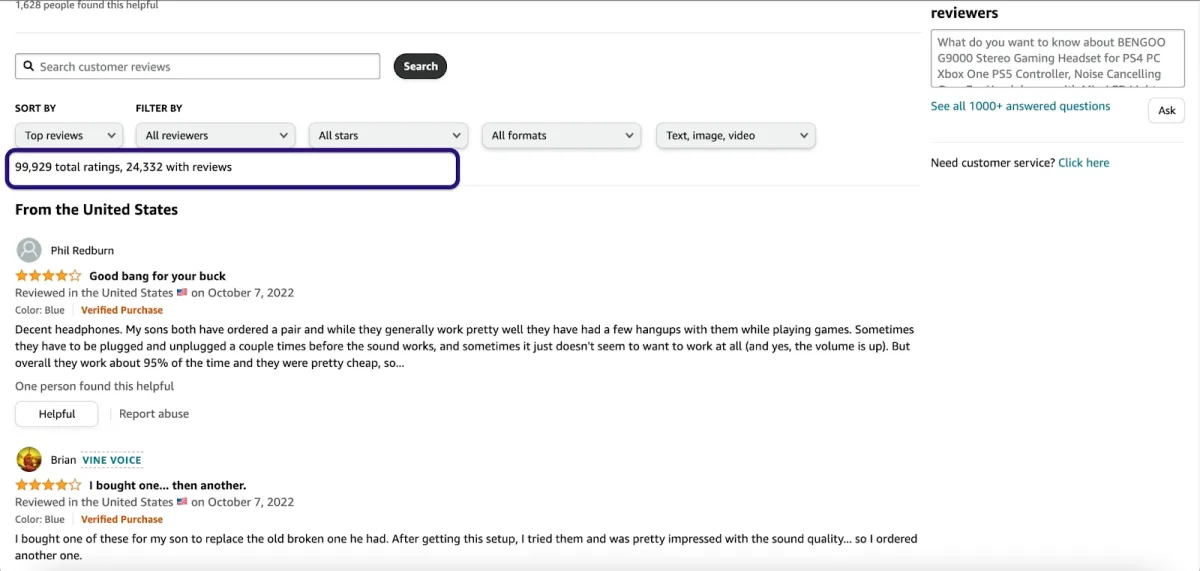
- All product information, including product name, brand name, product ratings, reviews, and price, is collected by a web scraping bot.
- To run the web scraping bot, copy the URL of the review page and paste it into it.
- The scraper will run the URL and collect all the required product information, such as product reviews, reviewers, and ratings.
- After scraping the reviews on the first page, the scraper will automatically scrape all the sub pages.
Recommendation: Before working with scraped data, select a few examples and compare them to the data source (in our case, Amazon) to ensure that the scraped data is consistent and accurate.
Challenge: In order to gain sufficient insight into a product or service, you must scrape dozens of product web pages. Most e-commerce websites are well-protected and use anti-scraping techniques like CAPTCHAs. When you make multiple requests to the same website, it will find your activity suspicious and restrict your access.
Solution: Use a residential or backconnect proxy server. Residential and backconnect proxies both provide greater anonymity. Residential proxies provide users with IP addresses assigned by ISPs (Internet Service Providers).
As a result, it is difficult to be detected and tracked by a website. Backconnect proxies are an excellent solution if your scraping project necessitates changing your IP address for each connection request.
Check out top 7 web scraping best practices to learn how to overcome web scraping challenges.
Sponsored
Bright Data’s Residential Proxy networks collect web data without being blocked or blacklisted from any location. It enables businesses to gain access to geo-restricted web content with greater anonymity. Residential proxies can be used for a variety of purposes in web scraping projects such as:
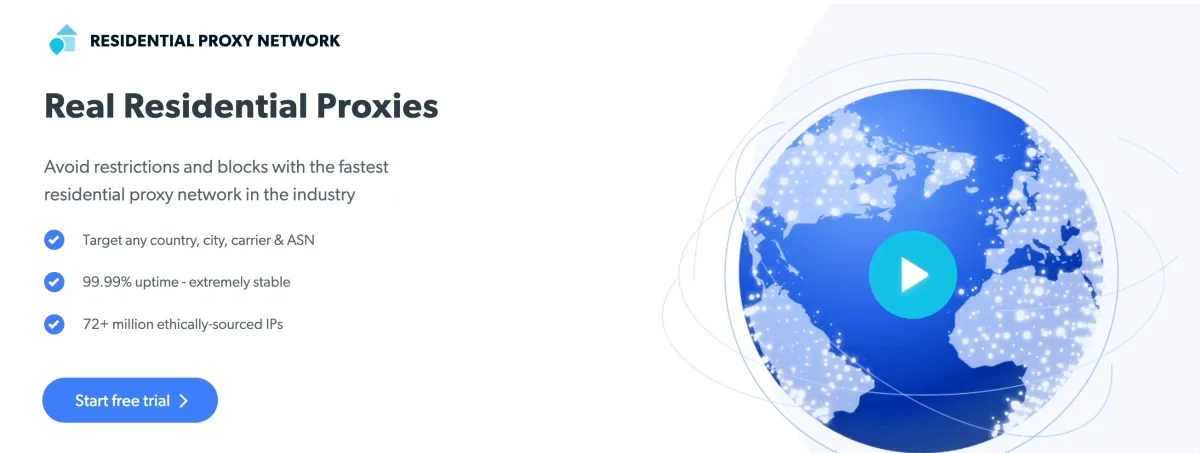
To assist you in making an informed decision, we compared top 10 residential proxy services.
How to scrape customers reviews from social media platforms
Social media channels are one of the review platforms where customers can share their product/service experience. Before purchasing a product or service, most look at customer reviews on review platforms (see Figure 4).
Figure 4: The graph shows the importance of customer reviews in consumer purchasing decisions.
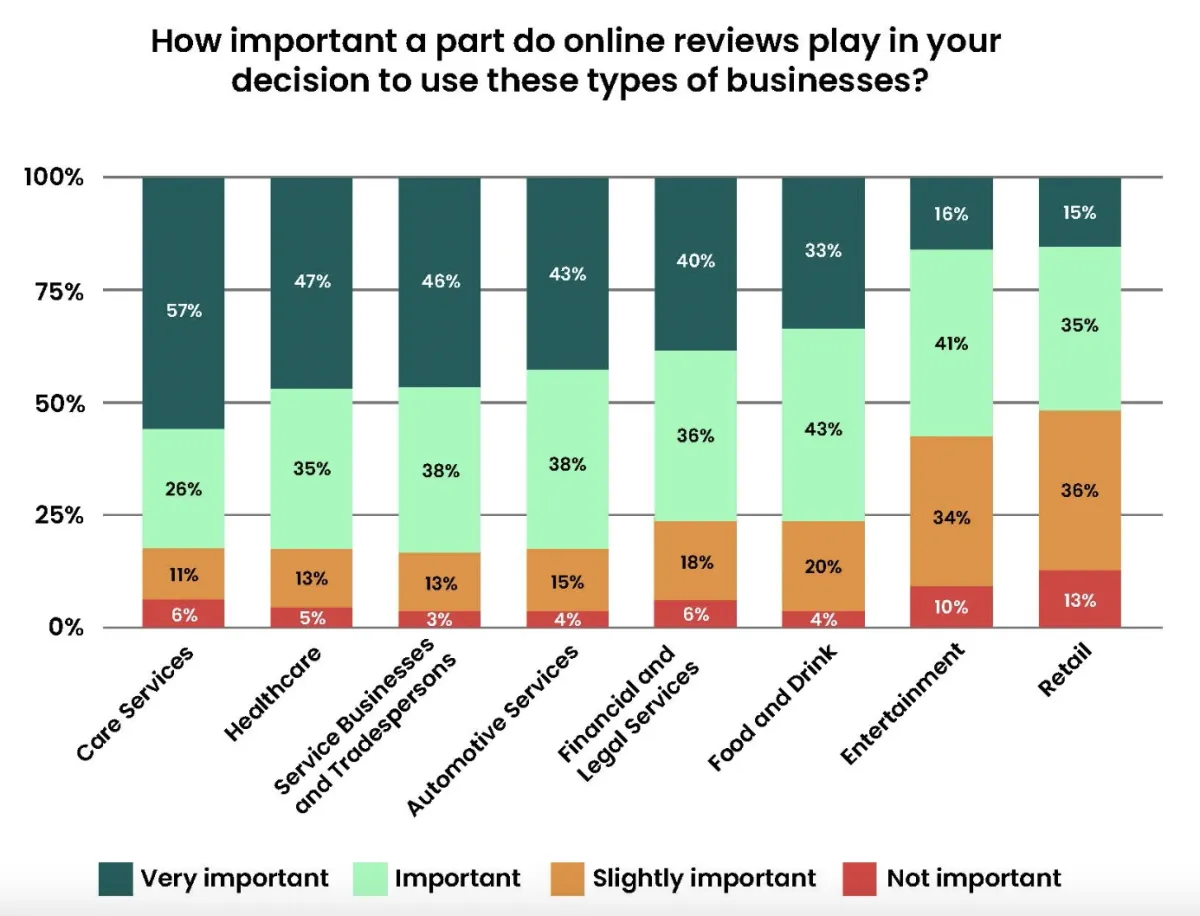
Many of today’s customers check brands’ websites, social media accounts and explore reviews to get insights into the brand’s products and services in the research and discovery stage of their purchase decision process. Businesses need to track social mentions of their brand and competitors on social media platforms to improve their products and empower customers in the decision-making process.
Web scraping bots collect all social mentions of your brand and competitors from social media platforms such as Twitter, Instagram, Facebook, and Youtube. Collecting and monitoring customer review data enables businesses to:
- See who is talking about their products/services and their location.
- Analyze their audience growth on social media platforms and how it grows compared to their competitors.
- Conduct a thorough sentiment analysis to determine where an issue with their products and services exists.
For more information about social media scraping, read “Social Media Scraping: Tools, How-to & Case Studies“.
How to scrape social mentions & customer reviews
Before scraping data, determine what your goal is. You may want to identify current issues with your products/services, understand your brand’s market positioning, or keep up with market trends. Continuing with the previous gaming headset example, your company wants to analyze your competitors’ products and services on social media.
- Determine who your competitors are
A quick tip for identifying competitors: Searching for your target keywords is one way to identify your competitors; the search engine will show your competitors ranking for your target keywords. Another way to find your competitors on social media platforms is to search for specific hashtags and product/service names (see Figure 6).
Figure 6: Twitter search results for “gaming headsets”
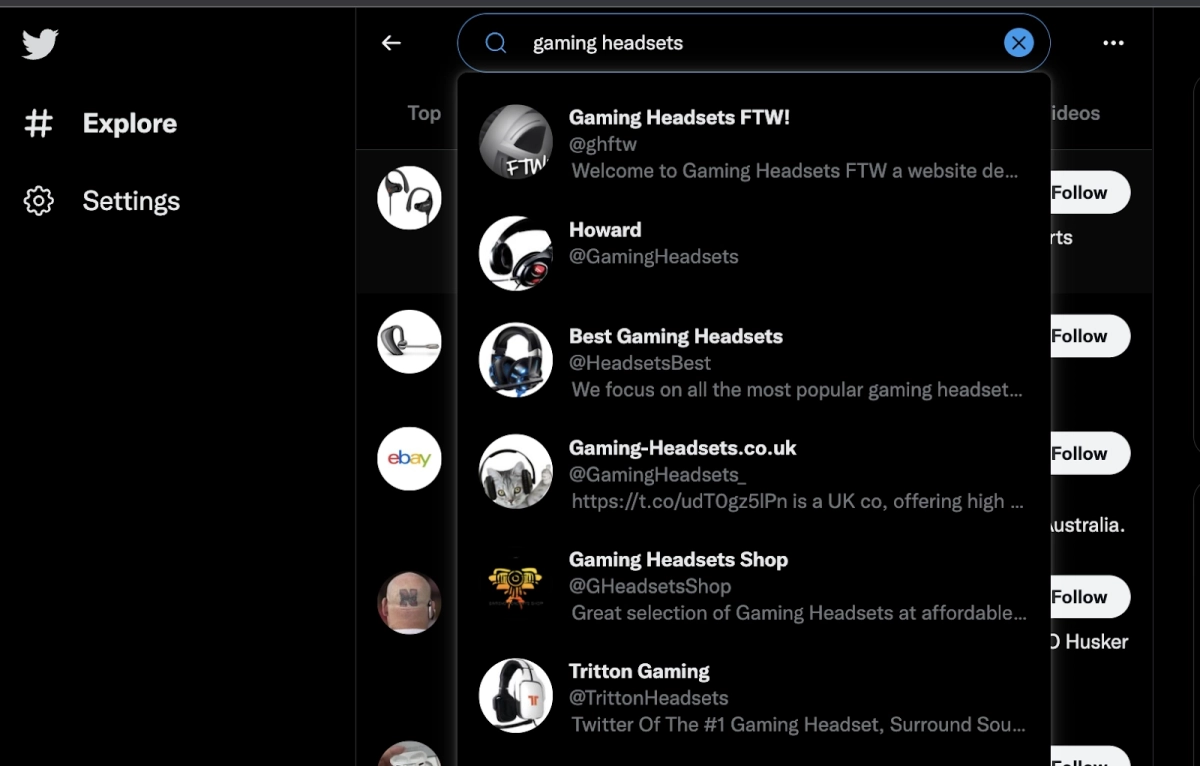
- Choose a social media platform to scrape, such as Twitter, Facebook, or Instagram.
- Choose the information you want to collect. For example, you can search Instagram for a specific gaming headset brand, copy the profile URL, and paste it into your data collector to gather data. The bot will provide you with all relevant information, such as post images, URLs, likes, comments, followers/following, etc. If you only need to extract customer reviews for products and services, choose post comments as your output data type. You will get all comments from your targeted data source.
- Provide the input, which could be a profile URL, a post URL, or a specific hashtag or keyword. You can collect customer reviews data using a specific URL, keywords, and #hashtags.
- When you collect customer reviews using a keyword or a hashtag, You can limit the number of comments and posts.
- When the data collection process is complete, you can view the collected data in CSV or JSON format, including the reviews, the writers, likes, the time posted, etc.
The challenge
Websites use honeypot traps to protect their content from hackers and web scrapers. A honeypot is a computer security network that is specifically designed to block web scrapers and hackers’ real IP addresses.
The solution
You can use a proxy server solution or headless browser to bypass honeypots. A headless browser is a regular web browser without user interface elements such as icons, videos, images, and buttons. Since you do not have to load all elements on the page, such as images, buttons, etc., data extraction will not take much time.
Further Reading
If you want to learn more about web scraping and how it can benefit your business, feel free to read our articles on the topic:
For guidance to choose the right tool, check out data-driven list of web scrapers, and reach out to us:
External Links
- 1. “Nine out of ten customers read reviews before buying a product“. (January 13, 2022).Globe NewsWire. Retrieved October 9, 2022.
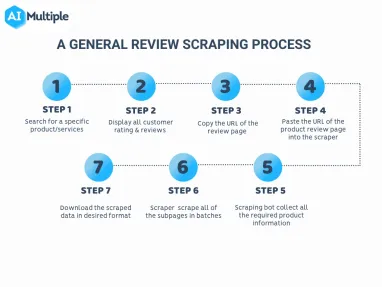
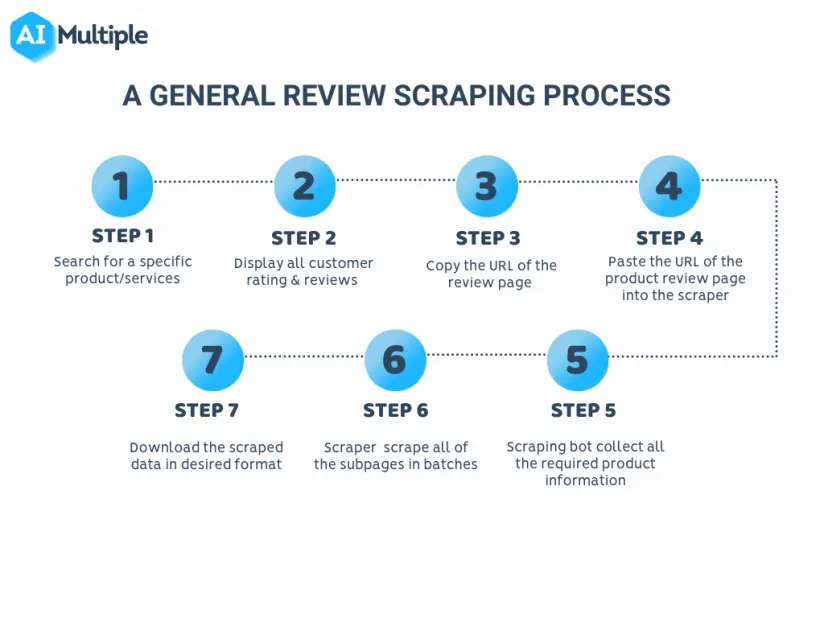

Comments
Your email address will not be published. All fields are required.